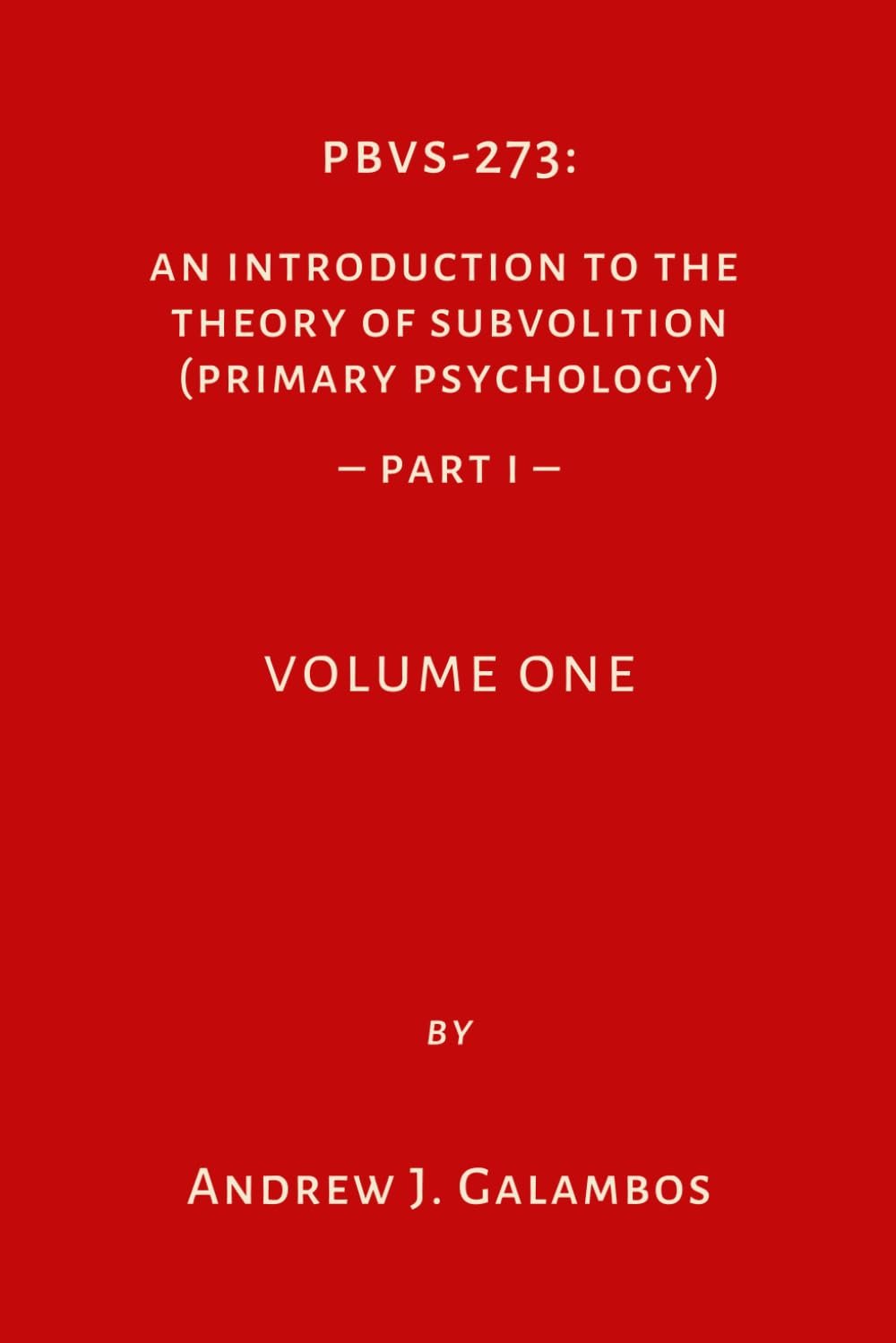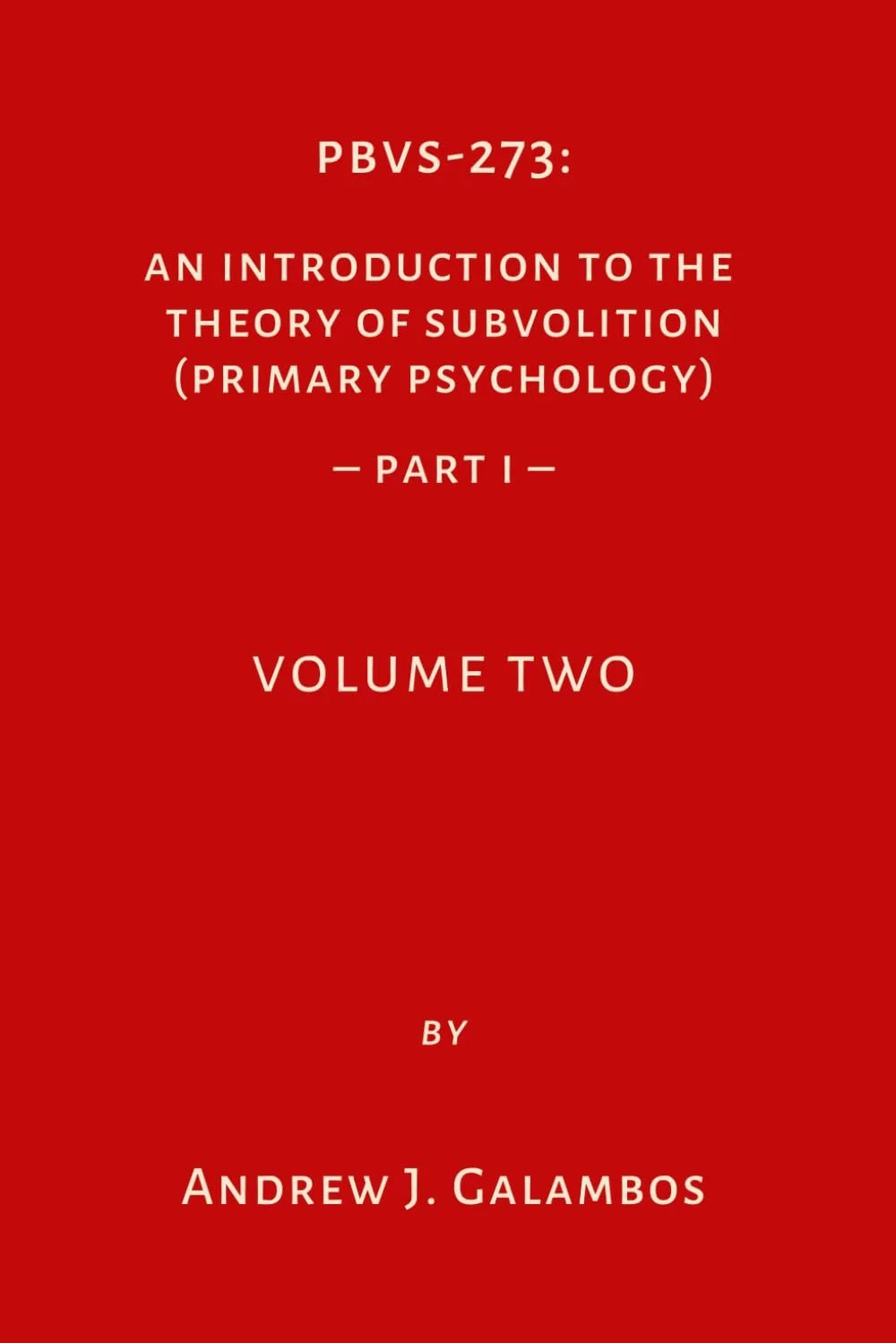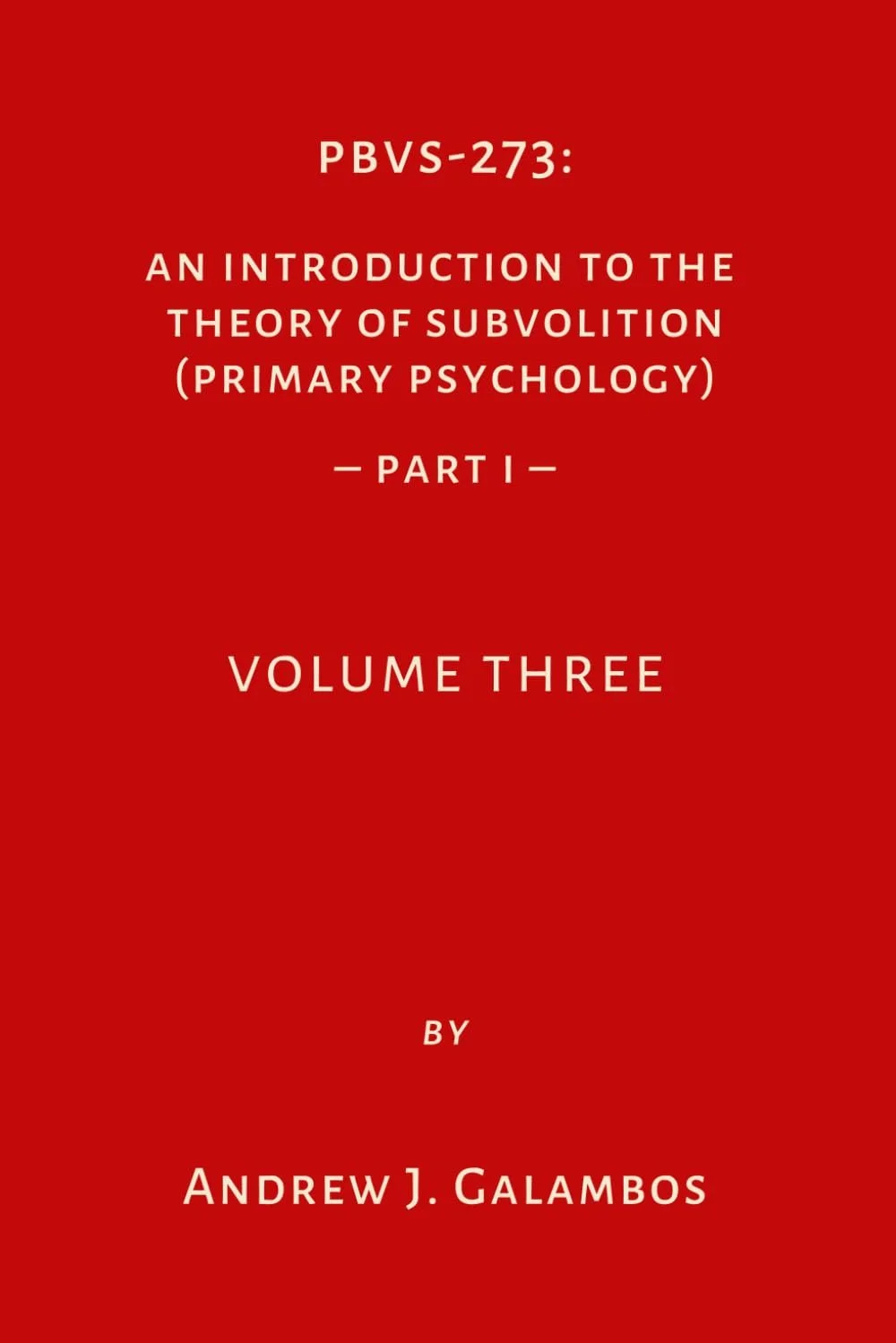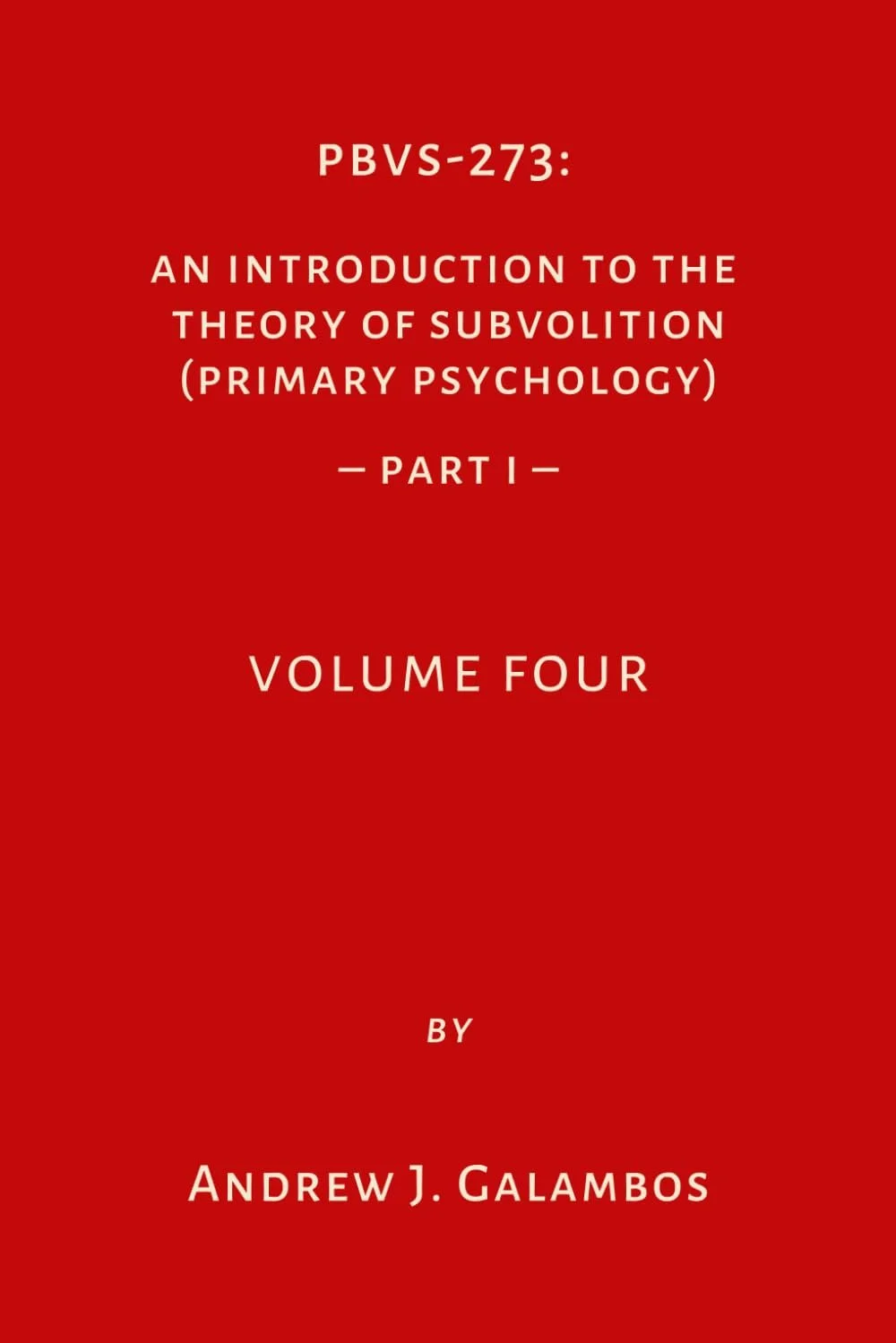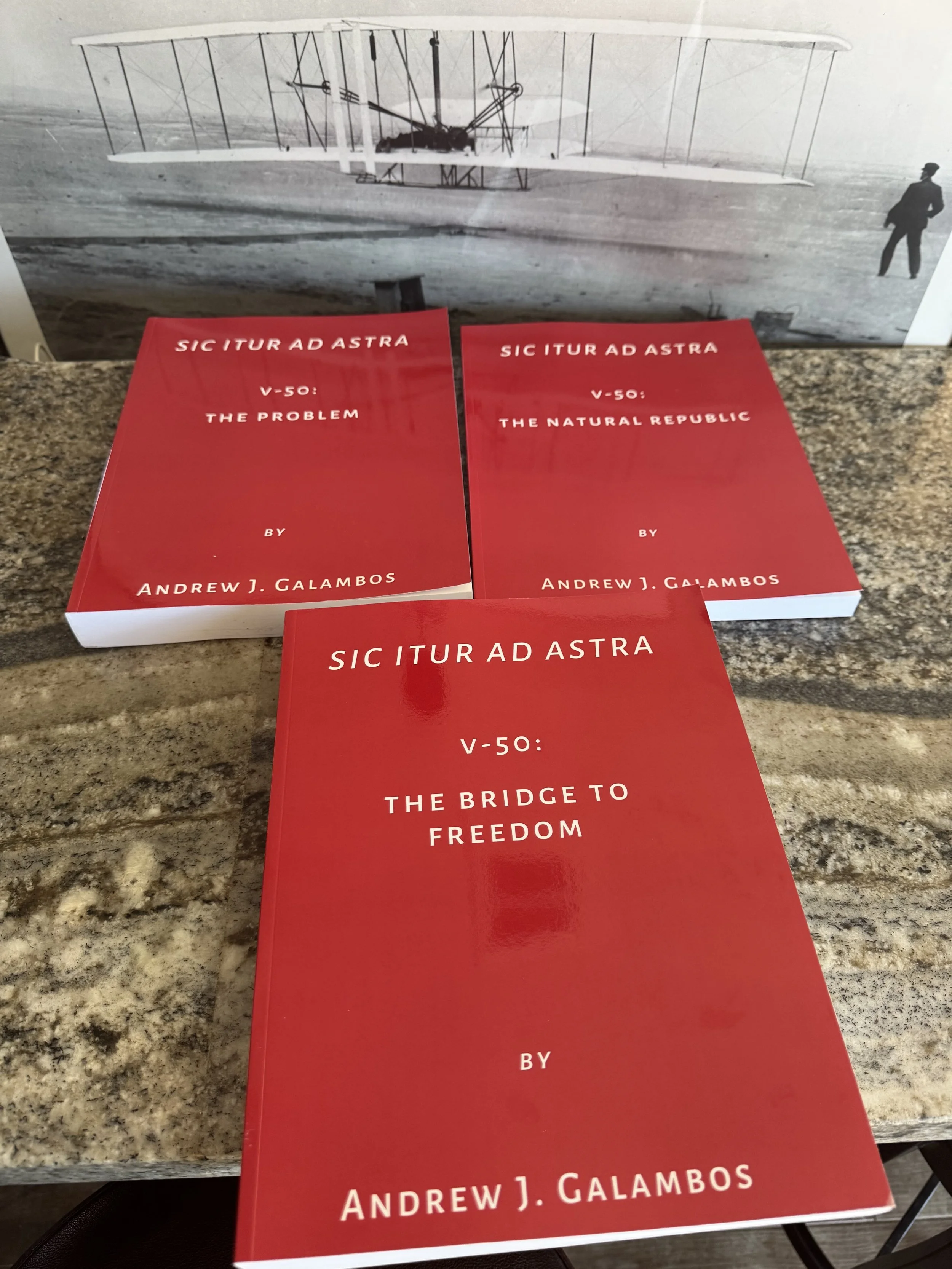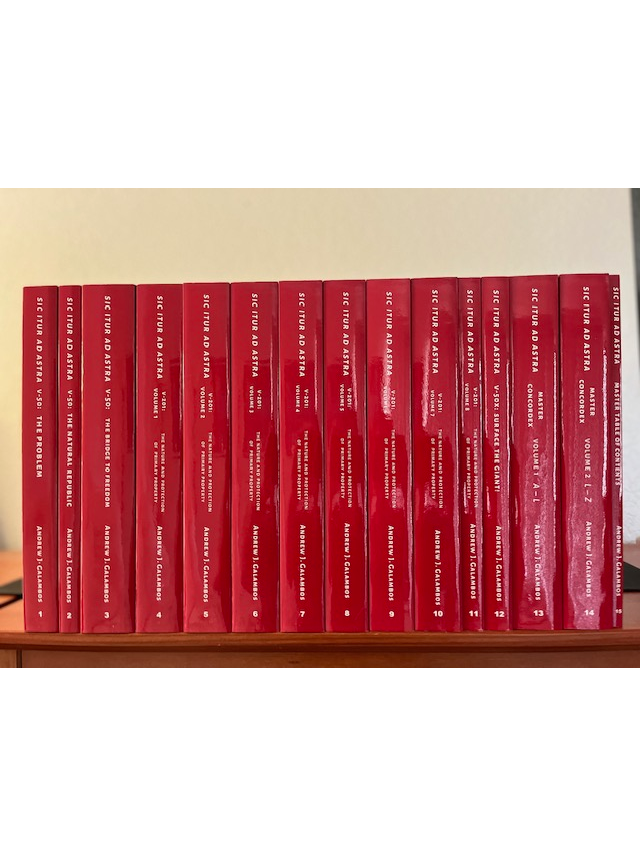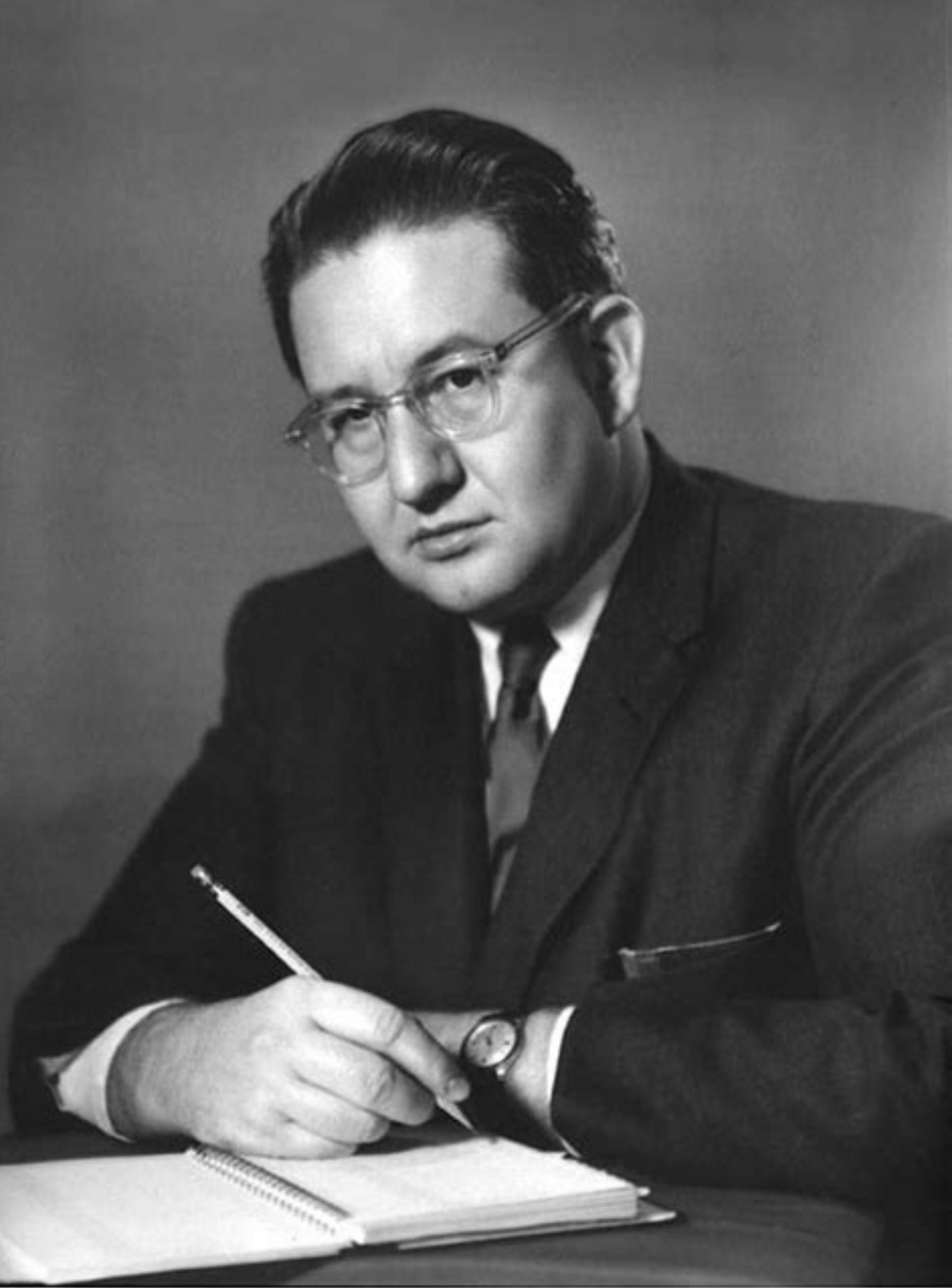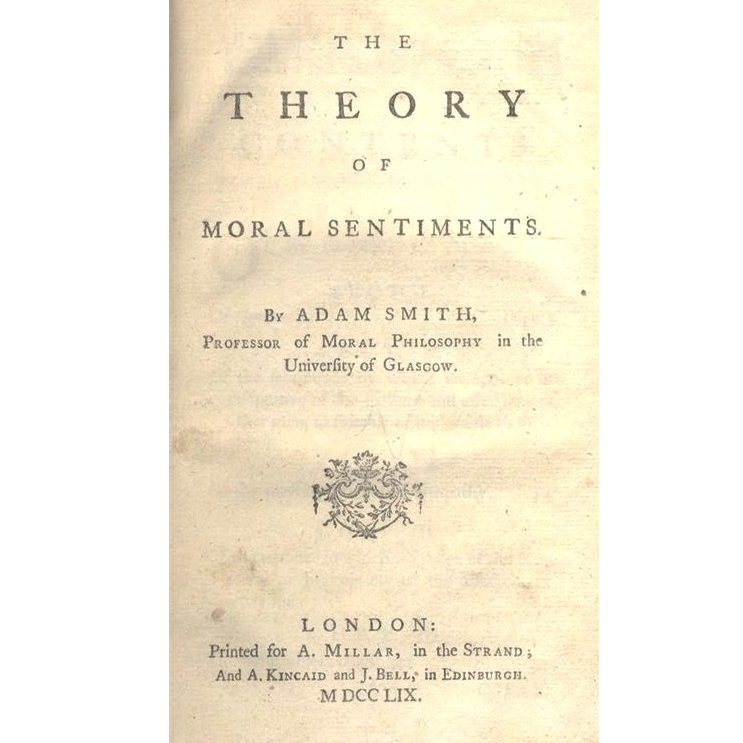
SIC ITUR AD ASTRA
Professor Andrew J. Galambos’ theory of volitional science (Course V-50) and theory of primary property (Course V-201) are an introduction to a revolutionary way of looking at the nature of human behavior and volitional choices, the problems of coercion, and the solutions for eliminating them and building a new world where freedom becomes the norm. The introductory Course V-50 and the advanced Course V-201 are now available to the public for the first time in a 15-volume book set called Sic Itur Ad Astra (“This Is the Way to the Stars”).
Sic Itur Ad Astra was originally released in 2024 in a beautiful, limited special edition in 15 volumes for $2,750. The same set is now available in paperback for just $429 (shipping and handling included within the continental United States).
This includes:
V-50: The Basic Course of the Volitional Sciences (3 volumes)
V-201: The Nature and Protection of Primary Property (8 volumes)
V-50X: Surface the Giant! (1 volume)
Master Concordex (2 volumes)
Master Table of Contents (1 volume)
This is the bargain of a lifetime! The tuition for course V-201 given on tape in 1979 was $600! Adjusted for inflation, that’s approximately $4,860 in today’s dollars.
This quality softbound edition is perfect for birthday presents, Newtonday gifts, graduations, as well as children and grandchildren you are trying to introduce to the “real” world but have been struggling to do so, or anyone else you would like to develop a true friendship with based on more than trivia.
In addition, Spaceland Publications is pleased to offer for the amazing price of just $99 the three-volume set edition comprising Professor Galambos’ course V-50:
Volume 1: The Problem
Volume 2: The Natural Republic
Volume 3: The Bridge to Freedom
These make great gifts, and what better way to introduce someone to the most powerful theory of our age, now available at this critical juncture! Both V-50 and V-201 are also available on Amazon in ebook, paperback, and audiobook form.
From 1961 to 1989, Professor Andrew J. Galambos developed and taught more than 117 volitional science courses at The Free Enterprise Institute in Southern California. Until recently, his work was not available to the public. Spaceland Publications is the first and only organization founded by the professor’s appointed literary executor, William W. Martin, to produce and publish his life’s work in the form he always intended.
Bookstore Preview
NOW AVAILABLE FROM SPACELAND PUBLICATIONS AND AMAZON: The first four (of eight) volumes of Galambos' revolutionary course PBVS-273: An Introduction to Subvolition (Primary Psychology)-Part I!
Astrophysicist and mathematician Andrew J. Galambos taught subjects critical to humanity’s future to more than 30,000 curious students who sought to improve how they understood the world. Spaceland Publications is committed to continuing Professor Galambos’ unique brand of influence and insight for a new generation of independent thinkers seeking a scientific approach to improving the world they live in. By spreading this essential knowledge, we can, for the first time in history, permanently solve social problems that have always plagued us – issues like crime, poverty, famine, political turmoil, the suppression of human rights and freedoms around the world, and even war.
Join us in this exciting venture. Check back often or sign up for our email newsletter to be informed when more Andrew J. Galambos courses become available.
QUESTIONS & ANSWERS
The following are lightly edited excerpts from a William W. Martin interview explaining what volitional science is, why it is important, and what Sic Itur Ad Astra is all about. For the full explanation and transcript of that interview, see The Ernst Zundel Interview of William W. Martin by Bill Cobb, available in our bookstore and at Amazon.
-
Volition refers to the ability to make choices. And science is organized knowledge. For the first time in the history of the world, we have an integrated science that refers to volitional interactions. This has never happened before. There have been approximations to it. There have been attempts at it. But nobody has ever succeeded. We have to grow up now and begin again, and we begin with the theory of freedom contained in SIC ITUR AD ASTRA which is the great integration between volition and physics. They’re now unified, using the same epistemology.
-
SIC ITUR AD ASTRA is a unique publication of a very great scientist’s work. Professor Galambos never wrote any of his theories out. Fortunately for the world, and for us, he recorded all of his lectures on reel-to-reel tapes and we have been able to transcribe the material on those tapes down to the last syllable. And from those transcripts, edit—very sparsely—what he said. And organize it in a way that reads very rationally and very elegantly. Professor Galambos always said that repetition is the mother of learning. And it’s a very effective, pedagogical tool. And sometimes when his sentences would appear to be run on, we would not try to rewrite that or paraphrase it at all. We would simply put a comma in, here and there. And the beauty of it was that, after a while, we found out that this had its own unique style and it was cumulative. And we found also that when you read the transcripts of his live lectures, you had a profit from it that was an example, in the sense that you remembered so much more. And it’s pleasurable reading because it’s got a homely touch to it, like a fireside chat.
-
The voluminous writings are all necessary because there is an awful lot to know and there are many delusions that man has to get rid of. And this really is not too much different from learning the Theory of Relativity and how it challenged previous notions of classical physics. If you wanted to learn the theory of celestial mechanics, you would have to pay the price.
-
How can I emphasize the magnitude of this late addition to the subject of philosophy? We have the ability to destroy ourselves and we don’t have the ability to prevent that from happening. We have a doomsday machine. We have for the first time a non-theological, non-science-fiction doomsday machine where the body of the science of the world is controlled by the brain of a Frankenstein. The collective insane minds of political opportunists and those who are behind them. So this final addition is all-important. It’s morality, non-theological and non-mystical. And mankind, for the first time, can have a cosmic destiny. That’s what he was born for.
-
Nowhere is this taught anywhere in the colleges. Nowhere is this taught in the universities. It’s not taught in the magazines. You can’t go to any bookstore. You can’t get it anywhere. You get it through what I would call the underground press. You’ve got to go where men chase the Holy Grail of knowledge and travel light. They will sacrifice everything for it.
-
Professor Galambos had a very unique attitude about education. He taught that the subject was basically the transmission of absolutely right concepts to those who could understand them and derive them and who, furthermore, would go out and live them and apply them in the real world, which he defined as the world which is derived from rationality and morality, those terms being defined absolutely. Very few people will ever pay the price to become truly educated.


